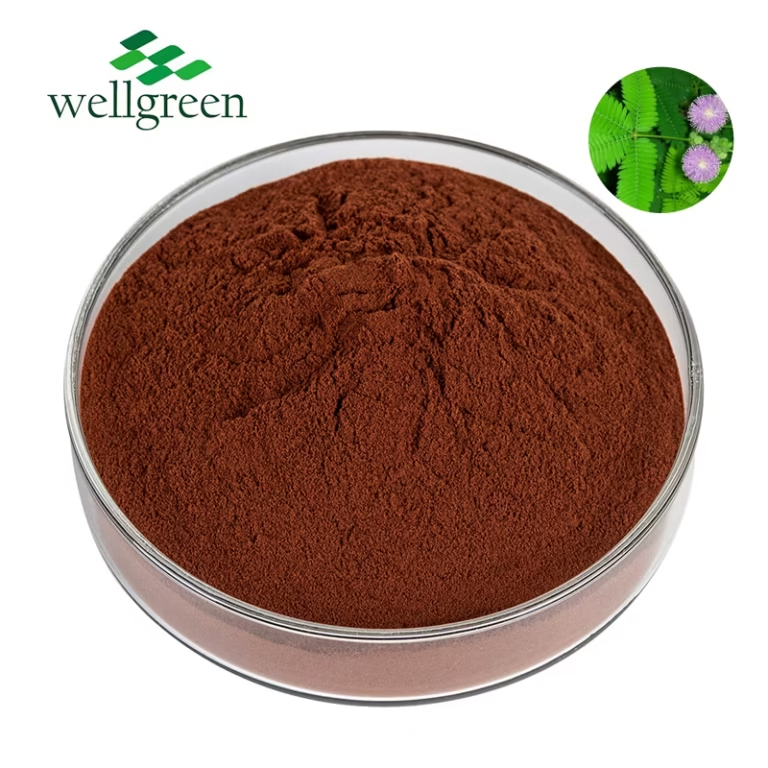Mimosa Hostilis: A Sacred Plant for Indigenous Cultures
Wiki Article

Mimosa hostilis is a significant plant deeply ingrained in the traditions of many Indigenous cultures across South America. For centuries, it has been employed by indigenous communities for its comprehensive spiritual and medicinal properties. The root bark, known as ayahuasca, is particularly revered for its entheogenic effects, believed to induce profound experiences that facilitate transformation.
Through ceremonies, the plant spirit of Mimosa hostilis is invoked, guiding individuals on a quest of self-discovery and reconciliation with their inner selves. The knowledge concerning this sacred plant has been passed down through generations, preserving the rich cultural heritage and wisdom of these communities.
Exploring MHRB Extract: Unlocking Mimosa Hostilis's Potential
Mimosa hostilis, a vibrant plant indigenous to the Americas, has captured the attention of both researchers for centuries. This intriguing species harbors within its roots a potent substance known as MHRB, which has gained significant popularity in recent times.
MHRB extract is celebrated for its potential, often associated with introspective journeys. Ethnobotanical studies suggest a long history of MHRB use in cultural practices.
- Scientists continue to investigate the chemical constituents of MHRB, seeking to illuminate its full range of effects.
- The complexities surrounding MHRB usage require responsibility. It is crucial to engage the expertise of knowledgeable individuals before exploring any practices involving this powerful compound.
Exploring the Ethnobotanical Uses of Mimosa tenuiflora
Mimosa tenuiflora, commonly acknowledged as "sacred mimosa", holds a significant position within the ethnobotany literature of diverse tribes. Its multifaceted properties have been harnessed for centuries in ancestral medicinal practices, as well as in ceremonies. The roots of this remarkable plant possess a rich repertoire of bioactive compounds believed to exhibit healing effects.
From treating ailments like inflammation to enhancing spiritual insight, Mimosa tenuiflora has long been revered for its profound impact on human life.
The Chemistry and Pharmacology of Mimosa Hostilis Root Bark
Mimosa hostilis root bark contains a complex chemical profile, primarily known for its significant concentrations of alkaloids. Among these, copyright and tetrahydroharmine are particularly important. These molecules possess a range of pharmacological properties, including mind-altering effects. The bark furthermore various alkaloids, like harmine, which may contribute to its total pharmacological profile.
The traditional uses of Mimosa hostilis root bark span a range of therapeutic purposes, particularly in South American cultures. However, it is crucial to acknowledge that scientific research on the efficacy of these uses remains scarce.
Unlocking the Power of copyright with Mimosa Hostilis
Mimosa hostilis, a tree native to South America, has captured the attention of researchers and individuals alike for its potent compounds, particularly dimethyltryptamine, or copyright. copyright is a powerful psychoactive substance known for producing intense altered states of consciousness. By ingesting the bark of Mimosa hostilis, one can journey into the realms of copyright-induced experiences. It is essential to remember that copyright is a powerful substance and should be treated with reverence.
- Safe use is paramount, and consulting from experienced individuals or knowledgeable sources is highly advised.
- The pathway of copyright can be both insightful but also potentially challenging. It is essential to prepare both mentally and physically for the consequences that may arise.
copyright from Mimosa hostilis provides a unique opportunity to journey within the depths of consciousness, may leading to spiritual growth and insight.
Challenges in Using Mimosa Hostilis
The utilization of Mimosa hostilis for personal purposes raises a myriad of philosophical questions. While some argue that its cultural significance warrants respect and tolerance, others warn its use due to potential harmful consequences. It's crucial to evaluate this complex issue with sensitivity, taking into account the religious contexts and potential risks. A nuanced perspective is essential for navigating the ethical nuances surrounding Mimosa hostilis.
Growing Mimosa Hostilis: A Guide for Growers
Embarking on the quest of cultivating Mimosa Hostilis can be a rewarding experience for the dedicated grower. This fascinating plant, indigenous to tropical regions of the Americas, has earned significant notoriety in recent years due to its distinctive properties. Prior to your cultivation mission, it is crucial to comprehend the specific requirements this plant demands to thrive.
- Providing adequate sunlight is paramount for healthy Mimosa Hostilis growth. These plants prosper in unfiltered sunlight, ideally receiving a minimum of six hours per day.
- Ensuring well-drained soil is essential to prevent root rot, a common issue that can destroy your plants. A mixture of clayey soil with organic matter is suitable.
- Frequent watering is necessary, but be mindful not to overwater your Mimosa Hostilis. Allow the top inch of soil to harden before providing another irrigation.
The Shamanic Traditions Surrounding Mimosa Hostilis
Deep within the timeless forests of South America, the rituals of healing have been practiced for generations. Among these potent allies is Mimosa Hostilis, a sacred plant revered by the shamanspiritual traditions of indigenoustribes. It embodies within its leaves a wellspring of wisdom, guiding seekers on their journeys into the spirit realm.
The elders understand that Mimosa Hostilis is not simply a plant; it is a portal between realms, connecting us to the ancient energies that sustain all of creation.
Confronting Legal Challenges with Mimosa Hostilis
The legal status of mimosa hostilis can be from one jurisdiction to another. This means that the legality of possessing, using, or cultivating this plant depends on your specific geographic location.
Furthermore, laws and regulations pertaining to mimosa hostilis are constantly evolving. It is therefore crucial that you carefully research the specific legal framework in your area.
- Talking to a legal professional who specializes in cannabis laws is highly advised.
- Remaining informed about any changes to the law can help you prevent any potential legal problems.
Mimosa Hostilis and Spiritual Exploration: A Journey Inward seeking
The ancient wisdom whispered through the rustling leaves of Mimosa Hostilis calls to explorers on a sacred quest. Venturing upon this path is to awaken hidden dimensions within, where the veil between worlds thinns. It's a transformative experience that illuminates the soul, revealing truths dormant beneath the surface. As you dissolve with the essence of this sacred plant, be prepared for revelations that challenge your perception.
- Welcome the unknown with an open heart and a inquiring mind.
- Let go all expectations and allow yourself to be swept away by the current.
- Remember, this is a path of self-discovery. Trust in your own inner compass.
The wisdom gained through Mimosa Hostilis resonates long after the experience has passed. It is a gift that can transform your life in profound and lasting ways.
Understanding the Challenges and Benefits of Mimosa Hostilis
Mimosa hostilis is a plant native to South America, gaining increasing attention for its potential pharmacological properties. While it contains valuable compounds like copyright, responsible for its psychoactive effects, it's crucial to approach this plant with respect. Understanding both the potential downsides and the positive aspects of Mimosa hostilis is essential for safe and informed use. Mimosa Hostilis root bark Potential side effects can include physical reactions, emphasizing the need for thorough research, responsible consumption, and a controlled environment.
- It's important to consult with a healthcare professional before using Mimosa hostilis or any products derived from it.
- Proper dosage is crucial to minimize potential side effects.
- Be aware of the regulations surrounding Mimosa hostilis in your region.
- Always prioritize safety and well-being when exploring the use of this plant.
 Report this wiki page
Report this wiki page